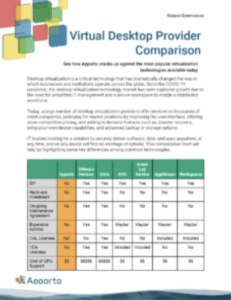Emerging Technologies Shaping the Future of Higher Education
The landscape of higher education is constantly evolving, driven by advancements in technology. From online learning platforms to virtual and augmented reality, emerging technologies are transforming the way students learn and interact with their peers and educators. As universities and colleges look to provide quality education to an increasingly diverse student population, they are exploring new ways to harness technology to improve learning outcomes. In this article, we will explore some of the emerging technologies that are shaping the future of higher education.
The Rise of Online Learning Platforms
Online learning platforms have revolutionized the way we learn. With the advent of the COVID-19 pandemic, these platforms have gained significant popularity, as they enable students to access course materials and learn at their own pace, regardless of their location. The flexibility and convenience of online learning make it an attractive option for students who may not have access to traditional classroom-based education.
Moreover, online learning platforms have made education more accessible to people from all walks of life. They have opened up new opportunities for those who may have previously been unable to attend traditional schools due to financial or geographical constraints. Online learning has also made it possible for people to continue their education while working or taking care of their families.
Advantages of Online Learning
One of the main advantages of online learning is that it allows students to learn at their own pace. This means that students can take their time to understand challenging concepts and revisit content as often as necessary. Additionally, online learning platforms typically offer a range of multimedia content, such as videos and interactive simulations, which cater to a variety of learning styles and preferences.
Another advantage of online learning is that it is often more affordable than traditional education. Many online learning platforms offer courses for free, while others charge a fraction of the cost of traditional education. This makes education more accessible to people who may not have the financial means to attend traditional schools.
Challenges and Solutions for Online Education
However, online learning does come with its challenges. A lack of face-to-face interaction with peers and educators can lead to feelings of isolation and disengagement. To mitigate this, some online learning platforms incorporate discussion forums and virtual classrooms, allowing students to interact and collaborate with their peers and educators.
Another challenge is the potential for cheating and plagiarism. To address this, some platforms have implemented more rigorous testing protocols, such as remote proctoring. These protocols ensure that students are taking exams in a controlled environment and prevent cheating and plagiarism.
Popular Online Learning Platforms
Some of the most popular online learning platforms include Coursera, Udacity, and edX. These platforms offer a wide range of courses across various disciplines, from computer science to humanities. Students can earn certificates and even degrees through these platforms, making them a viable alternative to traditional higher education.
In conclusion, online learning platforms have changed the face of education. They have made education more accessible, affordable, and flexible, enabling people from all walks of life to continue their education. While there are challenges associated with online learning, these can be mitigated through innovative solutions and technologies.
Artificial Intelligence in Higher Education
Artificial Intelligence (AI) has been touted as a game-changer in various industries, and higher education is no exception. By leveraging AI, universities and colleges can personalize the learning experience, offer targeted support, and improve student outcomes. AI can help institutions address some of the challenges that have long plagued the education sector, including high dropout rates, low student engagement, and limited access to personalized support.
AI-driven Personalized Learning
One of the most significant benefits of AI in higher education is its potential to enable personalized learning. AI algorithms can analyze vast amounts of student data, including their learning styles, preferences, and performance, to provide tailored recommendations for content and learning strategies. This level of personalization can help students stay engaged and motivated, leading to improved learning outcomes.
For example, AI-powered learning platforms can provide students with customized learning paths, suggesting specific topics and resources based on their interests and learning style. These platforms can also track student progress and adjust the learning experience in real-time, providing immediate feedback and support.
AI-powered Tutoring and Support Systems
AI can also support students outside the classroom by providing tutoring and support systems. Chatbots, for instance, can provide 24/7 assistance, answering commonly asked questions and providing guidance on course materials and assignments. This can be especially helpful for students who may not have access to traditional support systems, such as study groups or office hours.
Moreover, AI-powered tutoring systems can offer personalized support, adapting to each student’s learning needs and progress. These systems can identify areas where students are struggling and provide targeted interventions to help them overcome challenges.
Ethical Considerations in AI Implementation
However, the implementation of AI in higher education raises ethical considerations, such as data privacy and bias. It is essential for universities and colleges to have robust data protection policies and ensure that AI algorithms are fair and unbiased.
Moreover, institutions must ensure that AI does not replace human interaction and support entirely. While AI can provide valuable assistance, it cannot replace the human touch, which is critical to building trust and fostering a sense of community within the education environment.
Overall, AI has the potential to revolutionize higher education by providing personalized learning experiences and targeted support systems. However, it is essential for institutions to approach AI implementation thoughtfully and with a clear understanding of its ethical implications.
Virtual and Augmented Reality in the Classroom
Virtual and Augmented Reality (VR and AR) can revolutionize the classroom experience by providing immersive and interactive learning opportunities. These technologies have the potential to transform traditional teaching methods and create a more engaging and personalized learning environment for students.
Immersive Learning Experiences
One of the biggest advantages of VR and AR is their ability to create lifelike simulations that enable students to explore complex concepts and scenarios. For instance, medical students can use VR to perform virtual surgeries, allowing them to gain hands-on experience in a safe and controlled environment. Similarly, history students can visit historical sites virtually and experience the events and culture of the past in a more immersive way.
Furthermore, VR and AR can be used to create interactive and engaging learning experiences that go beyond traditional textbooks and lectures. For example, science students can explore the human body in 3D and learn about its different systems and functions, while geography students can use VR to explore different landscapes and ecosystems around the world.
VR and AR for Skill Development
Another advantage of VR and AR is their potential to help students develop practical skills. For example, engineering students can use VR to design prototypes and test their functionality, allowing them to gain valuable experience in a simulated environment. Language students can also benefit from VR and AR, as they can use the technology to practice conversational skills with virtual native speakers and improve their language proficiency.
Moreover, VR and AR can be used to create collaborative learning environments, where students can work together on projects and experiments in a virtual space. This can help develop teamwork and communication skills, which are essential for success in the modern workplace.
Overcoming Barriers to Adoption
Despite the potential benefits of VR and AR, the adoption of these technologies in higher education is still limited by factors such as cost and technical expertise. However, as the technology becomes more accessible and user-friendly, we can expect to see more universities and colleges incorporate it into their curriculum.
Furthermore, the COVID-19 pandemic has highlighted the importance of remote and online learning, and VR and AR can play a crucial role in enhancing the quality of online education. By providing immersive and interactive learning experiences, VR and AR can help bridge the gap between traditional classroom learning and online education, and create a more engaging and effective learning environment for students.
Blockchain Technology for Secure Academic Records
Blockchain technology has emerged as a secure and reliable way to store and verify academic records, such as degrees and transcripts.
As the world becomes increasingly digital, the need for secure and reliable methods of storing and sharing sensitive information has become more important than ever. In the field of higher education, academic records are among the most important and sensitive pieces of information that need to be securely stored and shared. Traditionally, academic records have been stored in physical formats, such as paper certificates and transcripts. However, these methods are prone to tampering and loss, and can be difficult to verify.
Benefits of Blockchain in Higher Education
Blockchain offers several benefits over traditional methods of record-keeping, such as increased security and transparency. By using blockchain, universities and colleges can ensure that academic records cannot be tampered with or altered.
One of the key advantages of blockchain technology is its decentralized nature. Instead of relying on a single authority or institution to store and manage records, blockchain allows for a distributed network of nodes to verify and validate transactions. This means that academic records stored on a blockchain are much less vulnerable to hacking, fraud, and other forms of tampering.
In addition to security, blockchain technology also offers greater transparency. Because all transactions on a blockchain are recorded and verified by multiple nodes, there is a high degree of transparency and accountability in the system. This can help to reduce fraud and corruption in the credentialing process, and ensure that academic records are accurate and up-to-date.
Implementing Blockchain for Credential Verification
Blockchain can also streamline the credential verification process, reducing administrative burden and cost. Students can share their academic records securely with potential employers and other institutions, without the need for intermediaries.
Traditionally, verifying academic credentials has been a time-consuming and costly process, requiring multiple intermediaries and manual checks. However, by using blockchain technology, this process can be streamlined and automated. Students can store their academic records on a blockchain, and then share a secure link with potential employers or other institutions. This link can be verified instantly, without the need for intermediaries or manual checks.
Potential Challenges and Limitations
However, the implementation of blockchain in higher education will require significant investment and collaboration between institutions and industry stakeholders. Additionally, blockchain technology is still relatively new and untested, with potential technical and legal barriers.
One of the main challenges of implementing blockchain in higher education is the need for standardization. In order for academic records to be stored and shared on a blockchain, there needs to be a standard format and protocol for storing and sharing this information. This will require collaboration between institutions, industry stakeholders, and regulatory bodies.
Another potential limitation of blockchain technology is its scalability. As more and more academic records are stored on a blockchain, the size of the network and the amount of data being processed will increase. This could potentially lead to slower transaction times and increased costs.
Despite these challenges, many experts believe that blockchain technology has the potential to revolutionize the way academic records are stored and shared. By providing a secure, transparent, and decentralized platform for credentialing, blockchain could help to reduce fraud, increase transparency, and improve the overall efficiency of the credentialing process.
Conclusion
Emerging technologies have the potential to transform higher education, making it more accessible, personalized, and engaging for a diverse student population. However, their implementation requires careful consideration of ethical, technical, and financial factors. As we navigate the challenges and opportunities of the digital age, it is essential to remain mindful of our responsibility to provide quality education and prepare students for the workforce of the future.



